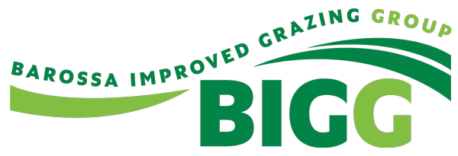The increase in supplementary feeding ewes, over the last few dry seasons, has meant feeding in containment, has been an effective tool for managing pregnant ewes. It has the added benefits of maintaining ground cover and minimising energy wastage from sheep wandering around large, bare paddocks. However, to ensure a successful lambing result it is critical to meet the ewe’s nutritional requirements with balanced nutrition during this time.
Ewes in late pregnancy through to lambing have high energy requirements and to meet these energy needs many producers feed cereal grain, cereal hays and straws. High grain and hay supplement levels can upset the mineral balance of pregnant ewes, especially close to lambing. These supplementary feeds contain high levels of potassium, which can interfere with the mobilisation of calcium and magnesium. Both calcium and magnesium are critical minerals for a ewe in the pre-lambing and lactation period. Cereal grains and often hay are also high in phosphorus and low in calcium. The calcium phosphorus ratio is often closer to 1:1 which isn’t high enough to meet the ewe’s calcium requirements during late pregnancy and into lactation.
During pregnancy and the first few weeks of life the lamb is entirely dependent on the ewe to provide calcium to build strong bones. Ewes can utilise calcium, stored in their bones, throughout pregnancy and lactation to provide a percentage of the required calcium levels to the lamb. The extra must be provided in feed types or mineral supplements. The bone development of the lamb determines its future bone calcium storage capacity. So, if for example, a ewe lamb gets inadequate levels of calcium from its mother during the early growth stages as an adult it will be more at risk of developing hypocalcaemia (a deficiency of calcium which can often cause death) when lambing and lactating themselves due to inadequate calcium stored in their bones.
The requirement for calcium and magnesium increases significantly in the 4 – 6 weeks prior to lambing and as detailed above ewes often can’t consume enough from dry paddocks or supplementary feeds to meet their requirements during this critical time. Magnesium assists with smooth muscle function, transfer of nervous impulses and stress. As such providing magnesium prior to lambing assists with the ease of lambing as well as preventing ewes going down with a magnesium deficiency. Trials have shown that “ewes supplemented with calcium and magnesium regulated their energy more efficiently than ewes not supplemented, which has many implications for the prevention of pregnancy toxaemia and the improvement of ewes reproductive performance.”
Other critical vitamins for lambing, like Vitamin A and E, come from green feed. When ewes have been grazing dry feeds, hays and grains for more than six weeks they may become deficient. These vitamins and other microminerals (which may become deficient when relying totally on supplementary feeding) play a crucial role in lamb development and aid in maximising colostrum production and immunity in newborn lambs.
An average cost of feeding a ewe, in containment, with a combination of cereal grain, hay and straw can range from $1.40 – $3.50 / week depending on their stage of pregnancy. A well-balanced pre-lambing mineral lick, containing all the essential macro minerals, micro minerals and vitamins for the later stages of pregnancy, can be added from 21 – 42 cents per ewe per week. A relatively low cost on top of the feeding costs to ensure the ewes is fed a balance diet throughout pregnancy and to ensure a successful lambing result.
For more information please contact Deb Scammell, deb@talkinglivestock.com.au or 0400 515 182.
